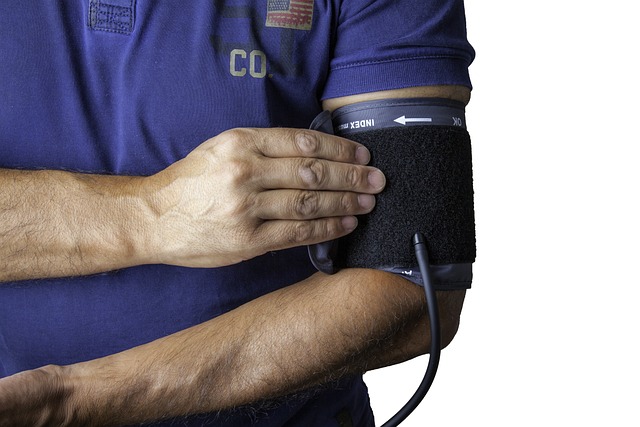Contrast water therapy, an ancient practice revitalized in modern sports science, uses alternating hot and cold temperatures to stimulate blood flow, enhance nutrient delivery to muscles, and clear metabolic waste. Proven effective for reducing muscle soreness and faster recovery times, this method benefits both elite and recreational athletes, making it a valuable tool for optimal sports recovery.
Discover the powerful science behind contrast therapy, a game-changer in enhancing athletic recovery. This therapeutic approach leverages the unique benefits of alternating hot and cold treatments, offering a natural way to accelerate muscle repair and reduce inflammation. Our article explores ‘contrast water therapy for sports recovery’, delving into its mechanisms, advantages, and practical implementation strategies. Whether you’re an athlete or fitness enthusiast, understanding this method can significantly impact your post-workout routine.
Understanding Contrast Therapy: A Basic Overview
Contrast therapy, a time-honored practice in many cultures, has gained significant attention in modern sports science for its potential benefits in enhancing athletic performance and recovery. This ancient technique involves alternating between hot and cold temperatures to stimulate various physiological responses. In the context of sports recovery, contrast water therapy is particularly popular, where athletes immerse themselves in hot water followed by cold water or ice baths.
The basic principle behind this method is to induce vasodilation (widening of blood vessels) with heat and subsequent vasoconstriction (narrowing) with cold. This process promotes increased blood flow during heating, enhancing oxygen and nutrient delivery to muscles while also facilitating the removal of metabolic waste products. The contrast between temperatures has been linked to reduced muscle soreness, faster recovery times, and improved overall athletic performance in both elite and recreational athletes.
The Science Behind Contrast Water Therapy
Contrast water therapy, a practice that involves alternating between hot and cold water, has gained significant attention in the realm of sports recovery. The science behind this method lies in its ability to stimulate various physiological responses within the body. When athletes immerse themselves in contrast baths, the sudden temperature changes cause vasodilation (widening of blood vessels) followed by vasoconstriction (narrowing). This process enhances blood circulation, which is crucial for sports recovery as it facilitates the removal of metabolic waste products and delivers essential nutrients to tired muscles.
Additionally, contrast therapy can reduce muscle soreness and inflammation. The cold water helps constrict blood vessels, slowing down the flow of lymphatic fluid, which carries away toxins and inflammatory cells. Meanwhile, hot water promotes blood circulation again, aiding in the replenishment of fluids and nutrients lost during intense physical activity. This dynamic interplay between heat and cold has been shown to accelerate recovery times, making contrast water therapy a game-changer for athletes looking to optimize their performance and reduce post-workout muscle fatigue.
Benefits for Sports Recovery
Contrast water therapy, involving alternating between hot and cold baths or showers, has emerged as a powerful tool for athletes seeking to enhance their recovery process. This ancient practice is backed by modern science, which reveals its numerous advantages in sports recovery. The primary benefit lies in its ability to stimulate blood flow, promoting the removal of metabolic waste products from exhausted muscles.
During intense physical activity, lactic acid builds up in muscles, leading to delayed onset muscle soreness (DOMS). Contrast therapy helps flush out this acid and accelerates the repair process. Additionally, it reduces inflammation, which is crucial for athletes aiming to minimize injury risk and return to peak performance faster. By incorporating contrast water therapy into their routines, sports enthusiasts can experience improved flexibility, reduced recovery time between training sessions, and enhanced overall athletic endurance.
Implementation and Best Practices
The implementation of contrast water therapy involves alternating between cold and hot water exposure, typically in a specific sequence. This can be done through immersion or showering. For athletes, a common protocol is to start with a cold water dip (around 59–64°F/15–18°C) for 10–15 minutes, followed by a hot water soak (up to 104°F/40°C) for 30 seconds to 2 minutes. The cycle is repeated several times, with rest periods in between. Best practices include ensuring the water temperatures are accurately measured and maintained for safety and effectiveness. It’s also crucial to consider the individual’s tolerance and comfort levels, as well as any underlying health conditions, to tailor the contrast therapy accordingly. Regularity is key; performing this routine after intense workouts or competitions can significantly enhance recovery and reduce muscle soreness.
Contrast water therapy, particularly contrast showering and immersion in alternating hot and cold waters, emerges as a powerful tool for accelerating athletic recovery. By enhancing blood flow and promoting cellular repair, this simple yet effective method offers numerous benefits for athletes seeking to reduce muscle soreness, inflammation, and fatigue after intense training sessions or competitions. As the science behind contrast therapy continues to evolve, its potential in sports recovery gains increasing recognition, making it a valuable addition to any athlete’s rehabilitation regimen.
